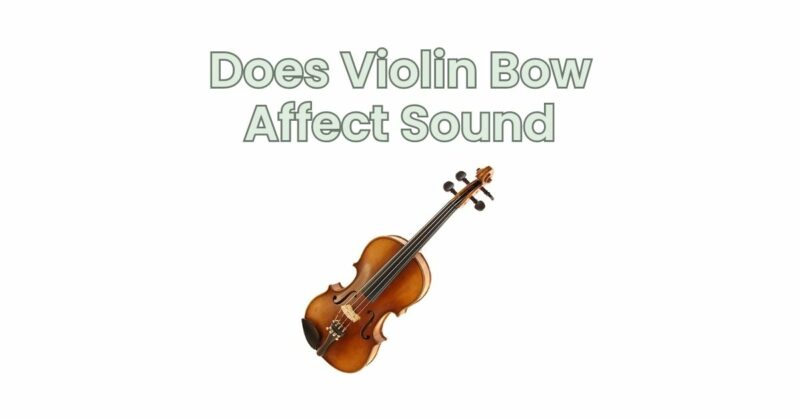The violin bow is a crucial component in the creation of beautiful music on the violin. It serves as the primary tool for producing sound by interacting with the strings. While the violin itself plays a significant role in determining the overall sound, the bow also has a profound impact on the tonal characteristics and expressive qualities of the instrument. In this article, we will explore how the violin bow affects the sound and delve into the various factors that contribute to this influence.
- Tonal Character: The choice of bow can significantly influence the tonal character of the violin. Different bows have varying degrees of stiffness, weight distribution, and balance, all of which affect the way the strings vibrate and produce sound. A bow with a stiffer or heavier construction tends to produce a stronger, more focused, and often louder sound. On the other hand, a lighter and more flexible bow can produce a softer, more delicate, and nuanced tone.
- Articulation and Projection: The bow’s characteristics directly impact the violinist’s ability to articulate notes and project sound. A bow with good responsiveness and control allows for precise articulation, enabling the musician to achieve clarity in fast passages and dynamic variations. Additionally, bows with higher stiffness and weight distribution can enhance the projection of sound, allowing it to carry better in larger performance spaces.
- Bow Hair: The condition and quality of the bow hair also affect the sound produced. Well-maintained hair with the appropriate amount of rosin enables the bow to grip the strings effectively, creating a resonant and vibrant sound. Insufficient or excessive rosin on the bow hair can result in a lack of grip or an overly harsh sound, respectively. Regular cleaning and rehairing of the bow hair are necessary to maintain optimal sound production.
- Bow Technique and Control: The way a violinist handles the bow greatly influences the sound produced. Bow speed, pressure, and angle of attack are all essential elements that can be adjusted to achieve different tonal qualities. The bow’s response to changes in technique and the violinist’s ability to control these nuances contribute to the overall sound production and expressiveness of the instrument.
- Bow Material and Construction: The material and construction of the bow play a role in sound production. Traditional bows are typically made from pernambuco wood, prized for its tonal qualities and flexibility. However, bows made from alternative materials such as carbon fiber or synthetic materials have gained popularity due to their durability, consistency, and affordability. While the material itself may not drastically change the sound, the construction and design of the bow, including the camber and balance, can influence the way it interacts with the strings.
The violin bow is an essential component that significantly impacts the sound produced by the violin. Factors such as tonal character, articulation, projection, bow hair, technique, and construction all contribute to the bow’s influence on the overall sound. Violinists should experiment with different bows, considering their playing style and desired tonal qualities, to find the one that best suits their preferences. Ultimately, a well-matched bow can unlock the full potential of the violin, allowing musicians to produce a rich, expressive, and captivating sound that resonates with their musical vision.


